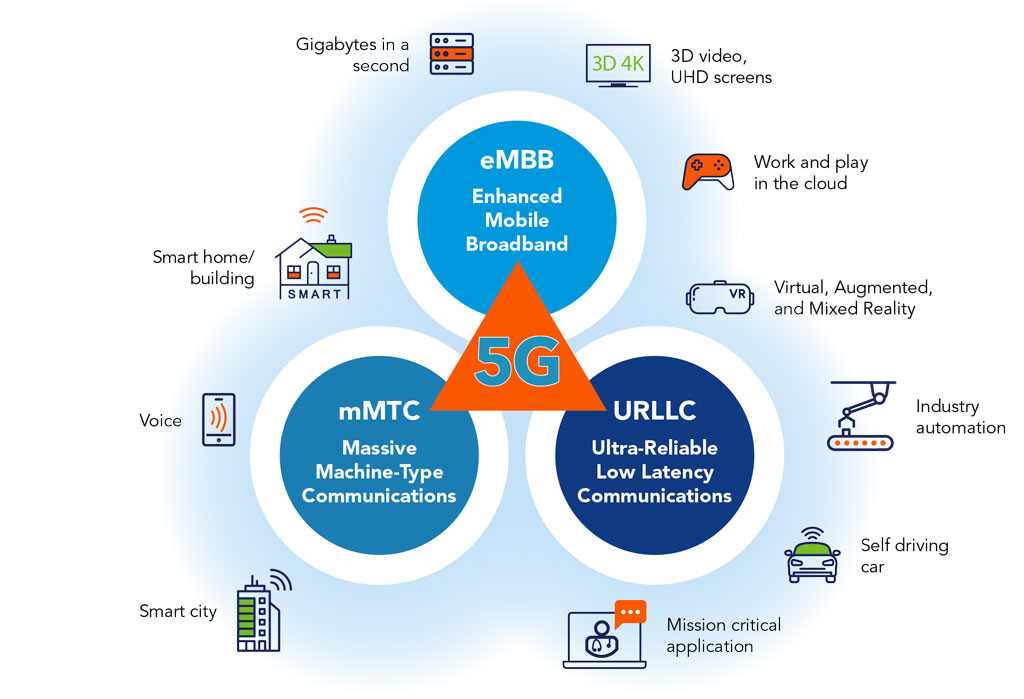Ahlian Jian Insights
Exploring the latest trends and news in various fields.
5G: The Invisible Highway of Tomorrow
Discover how 5G will revolutionize our lives, powering smart cities, connected devices, and a future beyond imagination. Join the journey!
How 5G Technology is Shaping the Future of Connectivity
The emergence of 5G technology is revolutionizing the way we connect and communicate. Unlike its predecessors, 5G offers significantly enhanced data speeds, lower latency, and the capability to connect a multitude of devices simultaneously. This advancement is not just about faster internet for consumers; it is also set to enable a wave of innovations across various industries. For instance, technologies such as autonomous vehicles, smart cities, and the Internet of Things (IoT) are heavily reliant on the rapid data transmission and connectivity that 5G promises. As connectivity evolves, the implications for businesses and everyday life are profound.
Moreover, 5G technology is paving the way for new applications and services. With its ultra-reliable low-latency communication, sectors like healthcare can benefit immensely by embracing telemedicine and remote surgeries, which require instantaneous data exchange. The entertainment industry is also in for a transformation, with 5G enabling immersive experiences in virtual and augmented reality. As we continue to explore the potentials of this advanced technology, it is clear that 5G will play an indispensable role in shaping the future of connectivity.

Understanding the Impact of 5G on Smart Cities and IoT
The rollout of 5G technology is revolutionizing the concept of smart cities and the Internet of Things (IoT). With its unparalleled speed and capacity, 5G significantly enhances the connectivity of various devices, enabling real-time data exchange and communication. This advancement allows cities to implement smart infrastructure, such as traffic management systems and energy-efficient buildings, leading to reduced congestion and lower energy consumption. According to a report by the McKinsey Global Institute, cities that effectively integrate 5G are poised to improve urban management and enhance the quality of life for residents.
Moreover, 5G technology is essential for supporting the burgeoning IoT ecosystem, as it facilitates the interconnectivity of devices across various sectors, such as healthcare, transportation, and public safety. With the ability to handle millions of connections per square kilometer, 5G ensures seamless communication among IoT devices, allowing for more efficient city operations and innovative solutions. As highlighted by the World Economic Forum, 5G not only enhances existing IoT applications but also paves the way for new services and technologies that can transform urban living.
What You Need to Know About 5G Security Risks and Challenges
As the world transitions to 5G technology, the risks and challenges associated with its security are becoming increasingly apparent. One of the primary concerns surrounding 5G is the potential for increased vulnerability to cyberattacks due to its more complex architecture. With millions of devices connected to the 5G network, each point of connection represents a potential entry for hackers. According to the Cisco Security Report, the number of connected devices is expected to reach 75 billion by 2025. This exponential growth amplifies the attack surface, making it essential for businesses and consumers to understand the implications of 5G security.
Moreover, 5G networks introduce unique challenges such as the use of network slicing, which allows multiple virtual networks to co-exist on a single physical infrastructure. While this innovation enhances efficiency, it also complicates security measures. Cybersecurity experts emphasize the need for robust validation processes and continuous monitoring to ensure that malicious activities do not exploit these slices. For more insights on the pressing security challenges of 5G, consider reviewing the findings from the IANA Report.